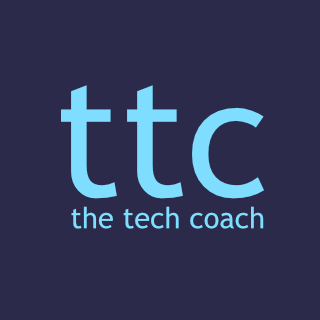Next year I will be integrating technology with Grades 1 through 5, as well as Grades 6 to 12! I find working with younger students to be hugely rewarding, as they are at an earlier stage of their learning journeys, I have an opportunity to teach them how to use tech in a much more playful way. Before I set off on this perilous journey, I must introduce my traveling companions; Grade 5 students and teachers! The reason for choosing these amazing people is that I want to prepare them for the transition from elementary school and up to middle school. Now that I have assembled the team, let me run through the supplies that we have accumulated:
- iPads, 1 between 2
- MacBook Airs, 1 apiece
- A green screen
- A tripod
- 1 lavalier microphone
- A tech integration map, which will guide us through the learning adventures ahead…

Treasure chest Icon made by dDara from www.flaticon.com
What Learner Be Ye?
In the student’s first quest, they will be required to read through the official IB Learner profile infographic. After they have finished digesting the content, they should choose one of the attributes that they feel most attached or connected. Then, they will create a simple poster, the aim of which is to promote that particular IB learner attribute (linked to ISTE standards innovative designer and creative communicator) As this is our brave heroes’ initial quest, there are some guidelines to adhere to, these are:
- Include a picture of yourself, taken with a device of your choosing
- The school dragon logo, it cannot be resized, but it can be positioned anywhere on the poster. Air dropped from the teacher
- It must contain a single word, that of your chosen attribute
- A color palette, taken from a https://coolors.co/ or similar
- You must focus on contrast between the CARP principles
There are many reasons why I chose this particular infographic, but I will only discuss two. The first is that I want to raise the profile of the learner attributes. And the second is…complicated, so without further ado let me dive into the reason why. I am very grateful that the IB provided a resource to demonstrate the 10 attributes of an IB learner, but this particular infographic reminds me of something one might see at a dental conference, detailing the benefits of the latest dental curettes! Yes, you can argue that they have used the CARP principles, but seriously, what G1-5 student is going to stop in awe when they see this!?
Call Yourself a Citizen?
Now for some of the nitty-gritty, and one could certainly argue, a topic that needs a lot of attention, but can seem rather bland at the best of times. I am talking about digital citizenship, and it neatly ties in with the ISTE standard of Digital Citizen. The challenge for our companions is to complete all DQ World zones over the course of 4 weeks!
Although most of our motley crew of Grade 5 students, and teachers, will no doubt have knowledge of how to create strong passwords, what personal information is, and the importance of NOT sharing it online, they may not have developed a deep understanding of just how important digital citizenship is, and the bigger part it plays in our online and offline society.
For this particular quest, I will enlist the help of one of the all-stars of digital citizenship learning programs, none other than the infamous DQ World. It is getting a bit old in the tooth, but it is still keeping up with the new crowd when it comes to digital citizenship. It is interactive, age-appropriate (grades 4-7), fun, challenging, entertaining, and informative. DQ World breaks down digital citizenship into 8 key areas, including screen time management, cyber-bullying, and digital rights. Teachers can also monitor their students’ progress through the intuitive and interactive dashboard, finding out how much of any particular area a student has completed. Furthermore, parents can also take part in learning with their children. In fact, students need to enter their parents’ email addresses when they first signup.
Crack the Olde Code!
No tech integration treasure hunt could be considered complete without the inclusion of a coding challenge! I love coding because it helps students develop a bunch of different skills, including problem-solving, thinking outside the box, collaboration, resilience, and patience; also see ISTE Standard – Computational Thinker If you have ever coded before and spent hours looking for a bug, only to find out you dropped a semicolon or misspelled a variable you will know what I mean when I mention patience! And this time the challenge would be to master various coding techniques such as variables, loops, and iteration; linked to maths where appropriate.
Now, the question is, which coding program should I choose? There are many more players in the market now than there were when this old treasure hunter began coding, but I will stick to Swift Playgrounds for this particular challenge. Why? Well for one it now runs not just on iPads, but also on OS devices as well; as long as you have Catalina installed (or their next 64-bit iteration).
It combines drag and drop coding, along with typing swift code, and it comes loaded with teacher workbooks and student challenges. It is an excellent gateway into XCode, although this could be some way off. Regardless, the concepts introduced in playgrounds could be traversed into other coding apps such as Scratch.
And Finally…
I really am super excited to be working with elementary school students again, and this blog post is just a taste of the amazing things that I look forward to collaborating on with my colleagues in Grades 1-5.
